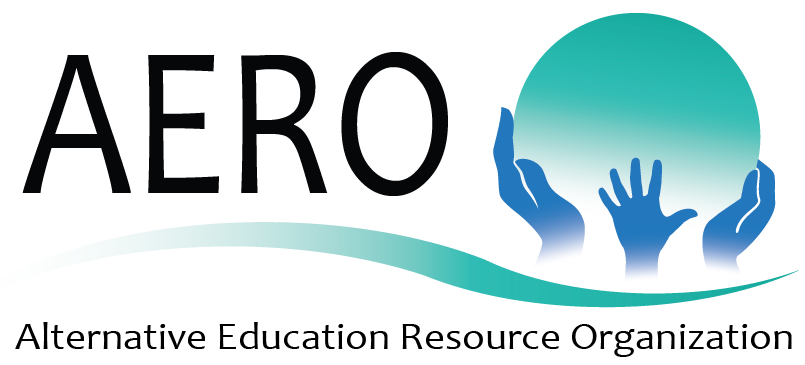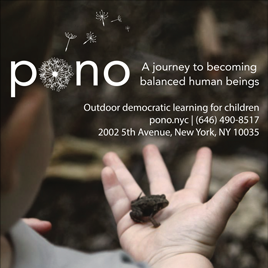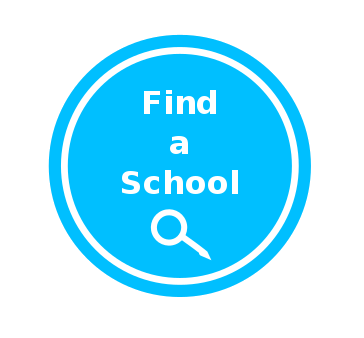Because of its length, we’ve agreed to break it into two parts: Round 2 is below and will cover the first three topics. Tomorrow we’ll release Round 3, covering the remaining three.
Enjoy!
Whitney
————————-
Hi Diane,
I really enjoyed our first exchange of ideas. Thank you for engaging.
Since you had the last word, the onus is on me to respond – which, frankly, makes me feel overwhelmed because we’ve already touched on so many enormously complex and difficult issues that we could spend weeks discussing just one of them.
So, I’m going to approach this following the old maxim, “How do you eat an elephant? One bite at a time.” I’m not going to try to respond to everything, but rather just a few things and hopefully we can build from there.
So let’s talk about two things, one high-level and one nitty-gritty: 1) tone, language and motivations; and 2) the Vergara case.
Tone, Language and Motivations
Here’s another thing we can surely agree on: we (and our allies) have far too often let our rhetoric get away from us, leading us to make ad hominem attacks rather than sticking to the issues. Randi throws kids under the bus on behalf of her members, you’re motivated by a personal vendetta against Joel Klein, I’m part of the hedge fund cabal that wants to privatize public education for our own profit, reformers are anti-teacher, etc.
Can we just stop? Please?
Let’s agree to disagree without being disagreeable. It diminishes all of us. It blinds us to the many things we agree on. And it makes it much harder to reach compromises, which are usually necessary.
No doubt there are some folks on “your side” who, for example, are more focused on more jobs, higher pay, better benefits and job security, etc. for union members than on the best interests of kids, just as there are people on “my side” who wrongly bash teachers and are more focused on earning higher profits (like the online charter school operators) or busting unions than on the best interests of kids.
But it’s been my experience and observation over 27 years (I know, I know, that makes me a rookie!) that the vast majority of people engaged in this debate are motivated not by self-interest, but by a deep passion for ensuring that all children in this country get a good education that gives them a fair shot in life.
So let’s stop the rhetoric about “defenders of the status quo” and “throwing kids under the bus” (from my side) and “the billionaire boys club that demonizes teachers and wants to privatize public education for their own profit” (from your side).
DR: Whitney, I have to stop you here, to clear the record. I know that "your side" refers to anyone who believes in public education as a "defender of the status quo," which is frankly absurd. The "status quo" is your side. You and your compatriots have controlled the U.S. Department of Education for the past eight years (at least). You got your favorite ideas imposed on the nation via Race to the Top. You were able, through Race to the Top, to get almost every state to agree to hand off public schools to charter operators, some of whom-frankly–are incompetent and fast-buck entrepreneurs–and to agree to evaluate teachers by the test scores of their students. You got whatever you wanted through Arne Duncan's close association with your reform movement. So, yes, there is a status quo, and it consists of high-stakes testing (which American children and teachers have endured for 15 years) and privatization via charter. The charter movement has promoted free markets, competition, and consumer choice, which opens the door to vouchers, which are now found in some form in nearly half the states. Add this all up, and you have a disruptive status quo that is highly demoralizing to teachers, destroys unions, and rattles the foundations of education without improving it.
WT: I agree that we reformers were able to get some of our agenda implemented under Obama and Duncan, but completely disagree that we have become the status quo. (By the way, I know you object to the term “reformers”, but I don’t know what else to call us; if I use your preferred term, “status quo’ers”, all of our readers will be confused.) I looked it up and it’s defined as “the existing state of affairs, particularly with regards to social or political issues.”
How can the status quo be anything except the existing K-12 public educational system, which is the 2
nd largest area of government spending (exceeding our military, trailing only healthcare) and by far the largest employer in the country at 7.2 million jobs (plus add 3.8 million more if you count higher ed) (per
this data from the U.S. Department of Labor)?
I also disagree with your characterization of our agenda, for a variety of reasons.
DR: The existing public school system is saddled with high-stakes testing because of “your side.” It is saddled with policies like test-based evaluation of teachers because of Race to the Top (“your side”). Thousands of teachers and principals have been fired and thousands of community public schools have been closed and replaced by privately managed charters because of the policies of “your side.” Your side is in charge. Your side makes the rules and the laws. Your side demonizes teachers and public education.
WT: Charter Schools
I think high-quality charters are an important piece of the puzzle in improving our educational system. This is a topic on which I know we will forever disagree and it’s a big, complex one, so let’s agree to return to it in more depth in a future discussion – but in the meantime, if you (and our readers) would like to read my response to your critique of charters, I published an open letter to you on 12/3/10 that is posted
here. Though I wrote it more than five years ago, I think it’s still quite timely.
Briefly, you always refer to them as part of an effort to privatize public education, which drives me crazy (I’m sure you’ll be pleased to hear) because charter schools are public schools! They receive public funds, are often situated in public school buildings, aren’t allowed to have admissions criteria (unlike many public schools like Stuyvesant) (yes, some charters cheat; so do many regular public schools), students have to take the same state tests, etc. They are simply public schools that aren’t overseen by the central bureaucracy – rather, by a board of directors made up of private citizens – and aren’t subject to the centrally negotiated union contract. This makes them different – but they’re still public schools, ultimately accountable, directly or indirectly, to elected officials the city or state in which they’re located.
As for charters opening the door to vouchers, I think, if anything, they’re a substitute. But regardless, I generally favor both – but the devil is in the details. I share your opposition to awful for-profit online charter operators like K12, but think we should expand high-quality charters that, as I noted in our last exchange, are willing to play by the same rules as regular public schools (e.g., take their fair share of the most disadvantaged students, backfill, etc.).
DR: Charter schools are not public schools. They have private boards; they are not required to have open meetings. Their finances are opaque. They choose the students they want and push out those they don’t want. When hauled into court or before the NLRB, their defense is always the same: we are not public schools, we are not state actors, we are private corporations operating schools on a contract with government. I am convinced: they are not public schools, because they say so themselves. They are neither transparent nor accountable. They leave the neediest students to the public schools, even as they drain resources from the public schools. They weaken the public schools by cherrypicking the most motivated students, excluding the neediest students, and taking away the resources that public schools require to function well. Charter schools are harming the education of the great majority of students, who are enrolled in public schools. We had a dual school system before the Brown decision of 1954; we should not go back and recreate a new one.
It has to be a little disturbing to you to realize that your agenda for charters is shared by all the Republican governors, as well as a few Democrats like Obama, Cuomo, and Malloy. You are also allied with Scott Walker, Rick Scott, Rick Snyder, Mike Pence, Paul LePage, Jeb Bush, and the Tea Party of North Carolina. Every Republican legislature loves charter schools, as it is an opportunity to resegregate the schools. The far-right American Legislative Exchange Council (ALEC) loves charter schools and has model charter legislation which is shared with their members in every state, as well as model legislation to eliminate collective bargaining and standards for teachers.
WT: Testing
Regarding testing, we actually agree on more than I expected. I agree with your critique that we reformers haven’t implemented it very well – which has certainly helped the anti-testing crowd give us a political drubbing. I share your concerns about testing (from our last exchange a few days ago: “teaching to the test, narrowing the curriculum, cheating”) and agree that “they favor those who come to school with advantages,” “that most testing should be designed by the classroom teachers, not by outside testing corporations,” and that standardized tests shouldn’t be given “more than once a year.”
Where we disagree, I think, is how the tests should be used. You wrote that “standardized testing should be used only diagnostically” and that it “should not figure into…the teachers' evaluation.”
Regarding the former, I’m not 100% sure what you mean by “only diagnostically,” but I believe that we need to use the results of standardized tests as one important measure – though not the only measure! – of how teachers, schools, districts, states, and our entire country are doing in achieving our goal of ensuring that every child gets a good education.
DR: Tests are diagnostic when they show what students know and don’t know, so instruction can be adjusted to help them do better. Today’s standardized tests have no diagnostic value. They rank students without giving any information about what they do and don’t know. Imagine going to a doctor with a sharp pain in your side. Your doctor says to you, “This is bad. You scored a 2 on a scale of 1 to 4. You are in the 30th percentile. Goodbye.” What you really want is a diagnosis. You want to know what is wrong and you want medicine that will stop the pain. Tests today are pointless and useless. All teachers learn is where their students rank, not what they need more help with.
WT: When tests show that half of black and Latino 4th graders are “below basic” readers (at least one year below grade level, often far more), this is critical information about this national disgrace. Of course it’s a separate discussion about what to do about this, which is rooted in how much of this problem is due to ineffective schools vs. other factors like poverty, but it’s critical to do the testing every year so, as a nation, we are regularly reminded of the problem, can take steps to address it, and track progress.
DR: We don’t need to test every student every year to know that kids need smaller classes and intensive help. Their teachers know that. No high-performing nation in the world tests every child every year. Testing is a measure, not a treatment. If we keep pouring hundreds of millions of dollars into testing without changing conditions in the schools, we will get nowhere. Whatever we need to know about student performance can be learned from NAEP (the National Assessment of Educational Performance), which tests American students every two years in reading and math and reports on state results and disaggregates scores by race, language, gender, disability, etc. The current onerous tests—lasting eight to ten hours for little children—are unnecessary.
WT: For similar reasons, it’s critical to know if the vast majority of children in a particular district, school or, yes, even classroom are, for example, reading or doing math far below grade level. I agree that it’s not necessarily a high school’s fault if, say, 90% of students are below grade level and the graduation rate is only 50% – that’s what tends to happen when students enter 9th grade three years below grade level – so the test results must be used carefully (and I know sometimes they’re not), but that’s not a reason to eliminate standardized testing or limit its uses. If there is no learning going on in an entire school – and there are, sadly, a lot of them – then we really need to know that!
DR: Be aware that 50% of students are always below grade level. That is the nature of grade level; it is a median. In any district where 80-90% are below grade level, you can be certain that there is a high concentration of poverty and racial segregation. Why assume that the teachers are bad? The root causes of low test scores are the same everywhere: poverty and segregation. What can be done to reduce those two harmful conditions?
As for classroom-level data, we surely agree that it may not be a teacher’s fault if every child in her class is reading below grade level – they likely entered the class that way. But if they spend a year in a teacher’s classroom and still can’t read or do math (or whatever the subject is) better than they could at the beginning of the year, then something is wrong and we (broadly defined: the department head, principal, superintendent, parents, taxpayers, etc.) need to know that so corrective action can be taken – so, again, while it’s important to use data and test results correctly, we need the data!
DR: Your faith in standardized testing is greater than mine. I served on the NAEP governing board for seven years, and I saw questions that had two right answers or no right answers. Children have talents and skills that are not measured on these tests. We have been testing everything that moves for 15 years and we have very little to show for it. It is time to think differently. We should give more thought to how to help students and teachers and less money to measuring them. The nature of standardized tests is that they are normed on a bell curve. Half will always be below the median. If we gave drivers’ licenses that way, half the population would never get one.
WT: Now let’s turn to the issue of using standardized tests as part of teachers’ evaluations, a hugely complex and contentious issue.
I think standardized test results should be used as part (and only a small – less than 50% – part) of a teacher’s evaluation – while simultaneously acknowledging the validity of your many objections to this. Good testing should be able to measure, at least to some degree, what really matters: growth. The concept is simple: if students start the school year at a certain level, they should be at a higher level by the end of the year, so let’s measure that.
Now, before you go off on me for saying this, I’m well aware that, in practice, it’s not simple at all: tests are imperfect and results are inconsistent year to year; many subjects (like art) areas don’t lend themselves to measurement by tests; sometimes a class has more than one teacher during the year; some students move between classes; etc. I also agree that reformers could have done a better job of implementing the process of tying student test scores to teacher evaluations.
But I view these problems as good reasons why test results shouldn’t be weighted too heavily, should be based on growth/learning, not static scores, and need to be balanced by comprehensive reviews by peers and administrators – but not as reasons to completely reject using test results in teacher evaluations.
DR: Test scores should not count at all in evaluating a teacher’s performance. As three major scholarly organizations (the American Educational Research Association, the National Academy of Education, and the American Statistical Association) have said, test scores say more about who is in the class than about teacher quality. Those who teach students with disabilities, English language learners, and gifted students will not get big score increases, may see flat scores, and may still be good teachers. Those who teach in affluent suburbs may look like superstars, even though they are no better than those teaching in the inner city schools. Value-added measurement, as it is called, has not worked anywhere. It is invalid, unstable, and unreliable. A teacher may get a high score one year, and a low score the next year. A teacher may register gains in math, yet no gains in reading; does she get a bonus or will she be fired?
I think you should know that 70% of teachers do not teach tested subjects. Only 30% teach reading or math in elementary and middle school. How do we evaluate the majority? They are evaluated based on the test scores of students they don’t know and subjects they don’t teach. That’s neither fair nor rational. So it may sound simple to say that teachers should be evaluated on whether scores go up or down, but it doesn’t work for the 70% who don’t teach tested subjects and it doesn’t work for the 30% who do because they are not teaching randomly assigned and comparable students. I urge you (and your readers) to read this article by a teacher who quit:
http://www.huffingtonpost.com/melissa-bowers/7-reasons-you-might-not-want_b_9832490.html.
WT: It would be like evaluating basketball players without looking at points scored per game. Of course this one statistic needs to be placed in a broader context (how many shots the player takes; rebounds; assists; steals; defensive prowess; whether someone has a good attitude and enhances (or diminishes) team cohesion, etc.) – but you gotta look at it!
DR: The purpose of playing basketball is to score points and win games. The purpose of education is not to get high scores but to develop good citizens who can think and act wisely, work with other people respectfully, love learning and continue learning when school is finished. What matters most can’t be measured on a standardized test.
WT: In summary, I really fear that the anti-testing backlash will put us on the path back toward the bad old days when school systems could give poor and minority students the worst schools – and even good schools could put such students into the low-expectations classrooms with the least effective teachers – without anyone being the wiser.
DR: After fifteen years of high-stakes testing, the conditions you fear are still in place. Poor and minority students are still in the schools with the lowest test scores. The achievement gap remains stubbornly large. Testing hasn’t helped the neediest children, because their needs are not addressed by standardized tests. We keep learning the same things every year, but doing nothing to change the causes. The anti-testing backlash, led by angry parents, will continue and grow. They don’t want their children to be labeled failures in third grade. They don’t want them to spend most of their time preparing to take tests. They don’t want them sitting for tests that take longer than the law school exams. And they don’t want their teachers fired if their students don’t get high scores. Why must this be inflicted only on public schools? If private schools were required to take these unnecessary and pointless tests, the rebellion would be joined by their parents too.


















